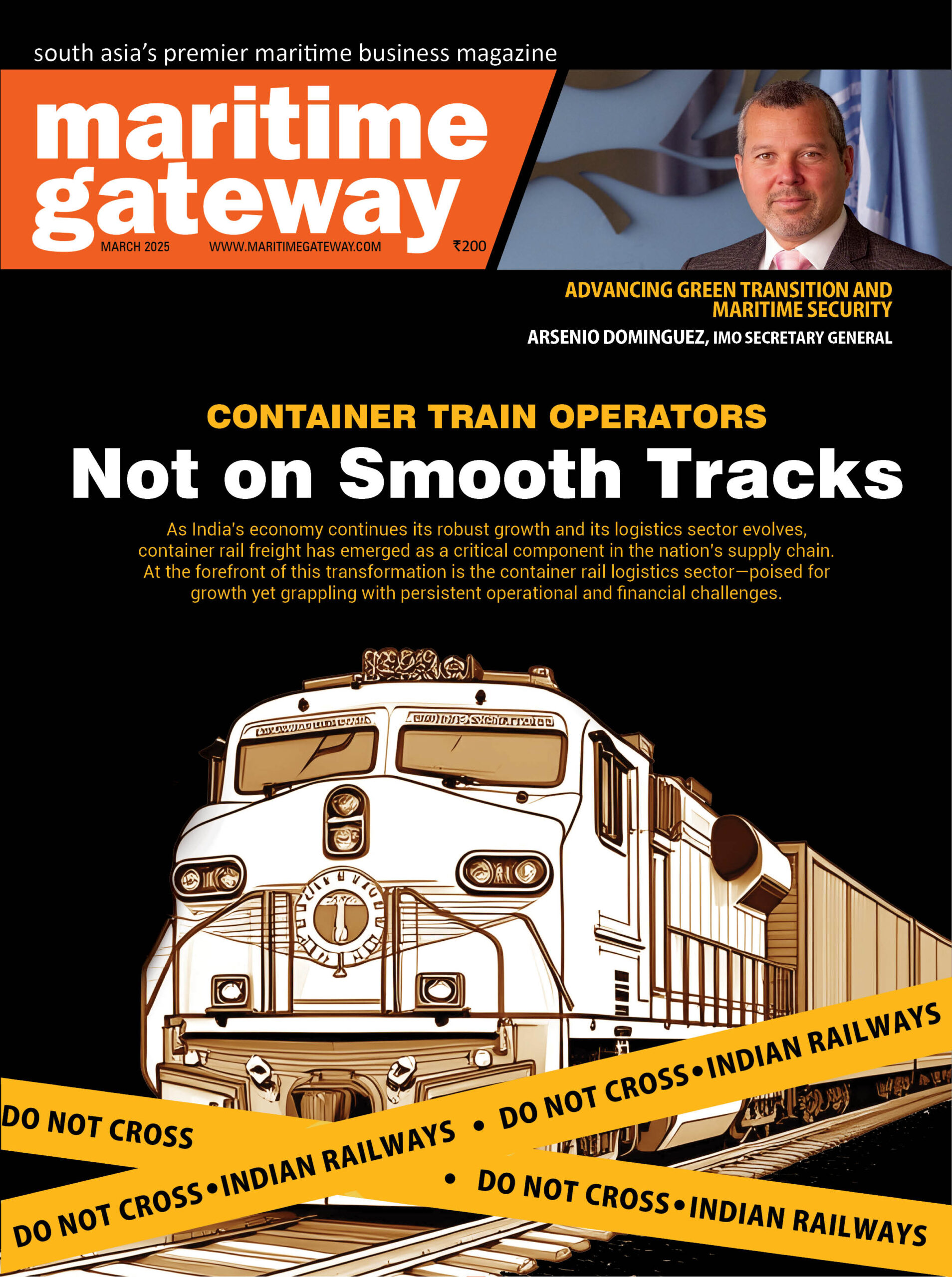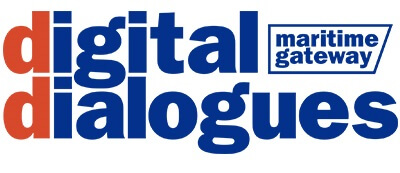Geopolitics and policy: The triple threat on the horizon
Few container industry leaders are as candid and forward-looking as Jeremy Nixon, CEO of Ocean Network Express (ONE), who opened his remarks by outlining the top three macro challenges facing container trade today.
“Our immediate three challenges right now are three political processes,” Nixon said. “The first one is the immediate short-term one in the US with Section 301—potential penalties on port calls by vessel operators. We’re in the consultation phase and we’ll find out on the 17th of April whether that’s a reality or non-reality.”
These proposed tariffs or operational restrictions could significantly reshape container flows into and out of the United States, adding compliance burdens and threatening supply chain continuity.
Secondly, Nixon turned to a simmering crisis that shows no signs of resolution: “The immediate situation with security in the Red Sea and Eastern Mediterranean… developments in Syria, Gaza, Israel, Iran, and the Houthis. So far, we were quite optimistic, hoping to see improvement in the safety and security situation. That doesn’t look likely now.”
The result is a continued detour around the Cape of Good Hope—a rerouting that adds weeks of transit, stresses capacity, and reshapes cost structures globally. “That has a big impact on our operations, a big impact on supply and demand,” Nixon added.
The third and most enduring challenge is decarbonization. “We can build decarbonized ships. We can operate decarbonized ships,” Nixon said. “But it’s really understanding the regulator and what is going to come. In the next four to six weeks, that’s absolutely critical.”
This sentiment echoed across the panel, where the uncertainty around policy timelines and fuel regulations was universally recognized as a limiting factor for long-term investment.
From conflict to volatility: Insights from tanker and bulk operators
While container shipping faces its own set of hurdles, tanker and dry bulk operators are navigating parallel challenges.
“In the short term, continued conflict either in the Middle East or in Europe is not good for global trade,” said Zahid Osman, President and Group CEO of MISC Berhad. “The new sanctions and restrictions being introduced certainly have a negative impact.”
Yet, paradoxically, volatility often brings demand. “In the tanker market, a lot of this trade needs to reroute,” Osman explained. “This drives the time on petroleum tankers—supporting the high rates that we are enjoying at the moment.”
From a dry bulk perspective, China continues to be the demand anchor. James Marshall, CEO of Berge Bulk, painted a more optimistic picture: “Despite a slow start to the year, the market has recovered strongly. Housing prices have stabilized, and so have transaction volumes.”
“There are still a lot of new projects in terms of supply of commodities coming onstream, and we still see China absorbing those,” he noted, highlighting a continued bullish view on capesize and larger vessel segments.
Regulatory game-changers: IMO 2025 and the race for clarity
Looking ahead, 2025 is poised to be a regulatory inflection point.
“We’re in the early innings of a decade of change,” said Christopher J. Wiernicki, Chairman and CEO of the American Bureau of Shipping (ABS). “One of the biggest things in 2025 is what’s going to happen at IMO. This industry needs regulatory clarity, consistency, and certainty.”
To meet the IMO 2050 goals, Wiernicki estimated the need for “probably 70% zero-carbon fuel, requiring ten times more renewable energy, and 30% carbon-neutral fuel, needing 100 times more carbon capture.”
What’s emerging is a layered strategy combining fuel innovation, retrofitting, and digital optimization. “About 70% of the answer is in the fuel,” Wiernicki said. “But 15% is in energy retrofits and 15% in data and performance optimization.”
The maritime Marshall plan: A pragmatic blueprint
Berge Bulk’s James Marshall offered one of the most comprehensive approaches to decarbonization, which he dubbed the “Maritime Marshall Plan”—a nod to the massive post-war reconstruction initiative.
“We’ve tried to take a very practical view on decarbonization. First, improving our existing fleet—it is 45% more efficient than in 2008,” he said. “Second, adopting new technology like wind wings, route optimization, and better coatings.”
Berge Bulk has also embraced ammonia and carbon capture. “We’ve ordered two ammonia ships under the Singapore flag. We’ve trialed our first onboard carbon capture system,” Marshall shared. “We’ve also invested in nature-based solutions and carbon capture onshore.”
This multi-pronged strategy reflects a growing recognition that no single solution will be enough—and that owners must act even amid regulatory ambiguity.
Ammonia ascending: The fuel of the future?
NYK Group CEO Takaya Soga shared similar optimism around ammonia as a maritime fuel, pointing to its scalability and existing global infrastructure.
“Almost every country has an ammonia factory,” Soga noted. “If they can get clean electricity, they can scale up ammonia production for maritime use.”
NYK has already launched the world’s first ammonia-fuelled tugboat in Yokohama and is planning a mid-class ammonia gas carrier in 2026. “Technology must go first,” he said, “but the next step is to create a network.”
Jeremy Nixon echoed this view while advocating a diversified fuel approach. “We are making sure all new ships are dual fuel—methanol, ammonia. We can’t ignore LNG either, given the EU’s current regulatory support,” he said. “What comes out of the IMO in the next three months sets the trajectory for the next 30 years.”
Digitalization: The unseen accelerator
While fuels and engines dominate headlines, digitalization is fast becoming a cornerstone of maritime decarbonization.
“Digitization and data analytics are the low-hanging fruit,” said Wiernicki. “They help drive operating costs down, enable predictive maintenance, and support route optimization.”
James Marshall shared tangible examples of how his fleet is leveraging AI. “We use a sophisticated weather routing system that runs hundreds of simulations,” he said. “With better internet, we’re also doing more onboard training and safety simulations.”
Digital twins, port performance analytics, and condition-based maintenance are just some of the tools accelerating both decarbonization and operational excellence.
Human Capital: The Hidden Link
Finally, amid all the talk of technology and fuels, Wiernicki emphasized the human factor.
“We need to be investing in seafarer safety and training as much as in next-generation fuels,” he said. “People have common sense, a sense of humor, and instincts that machines don’t.”
As vessels become more digitally complex and run on unfamiliar fuels, crew competency becomes paramount. “It’s not just about training,” Wiernicki added. “It’s about designing human-centric systems that reduce cognitive overload.”
Conclusion: From reactive to proactive
In summation, container shipping finds itself both besieged by short-term challenges and bolstered by long-term innovation.
From geopolitical risks and policy uncertainty to bold bets on ammonia and AI, industry leaders are shifting from reactive risk management to proactive transformation.
As ONE’s Jeremy Nixon put it, “We’re on a good trajectory. But to get to net zero by 2050, we need these green fuels to come through.”
The roadmap is clear: navigate the near-term headwinds with agility, and invest—with purpose—for a greener, smarter maritime future.







